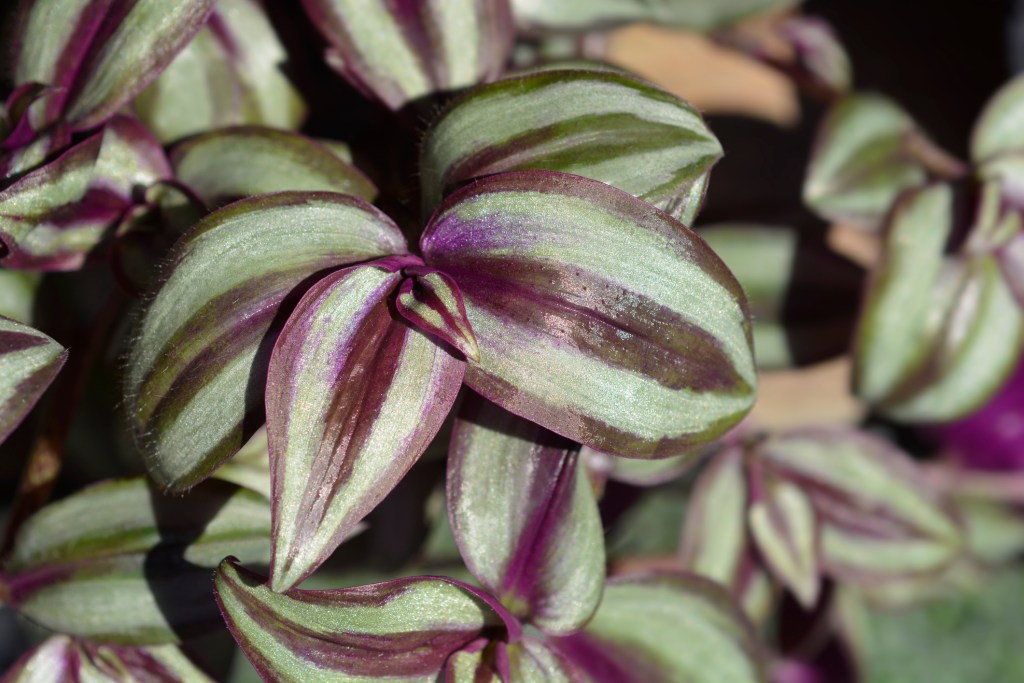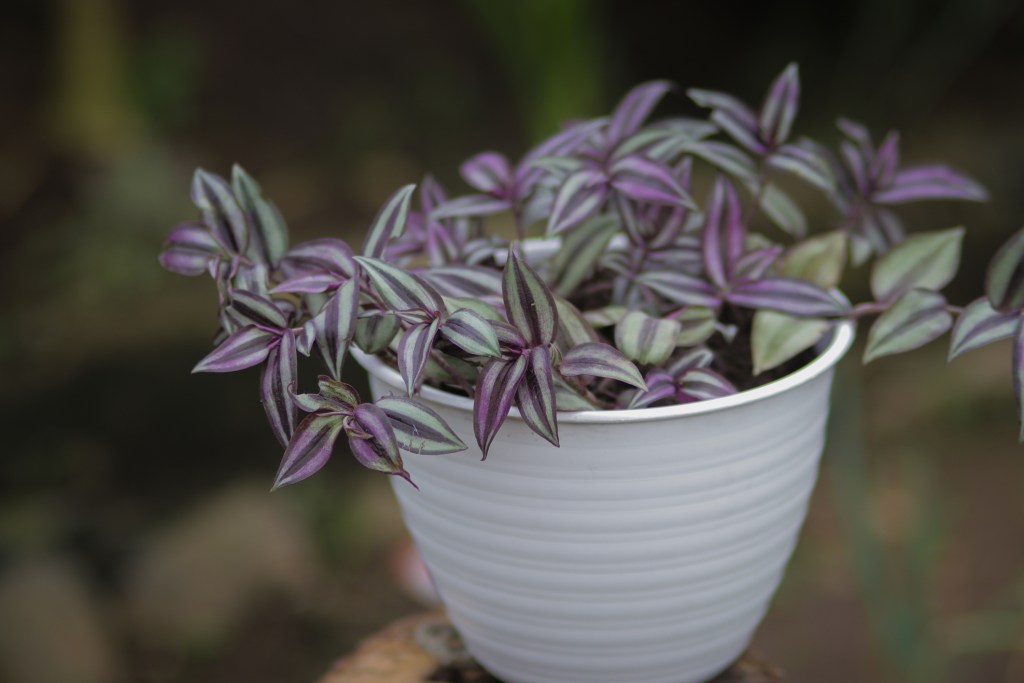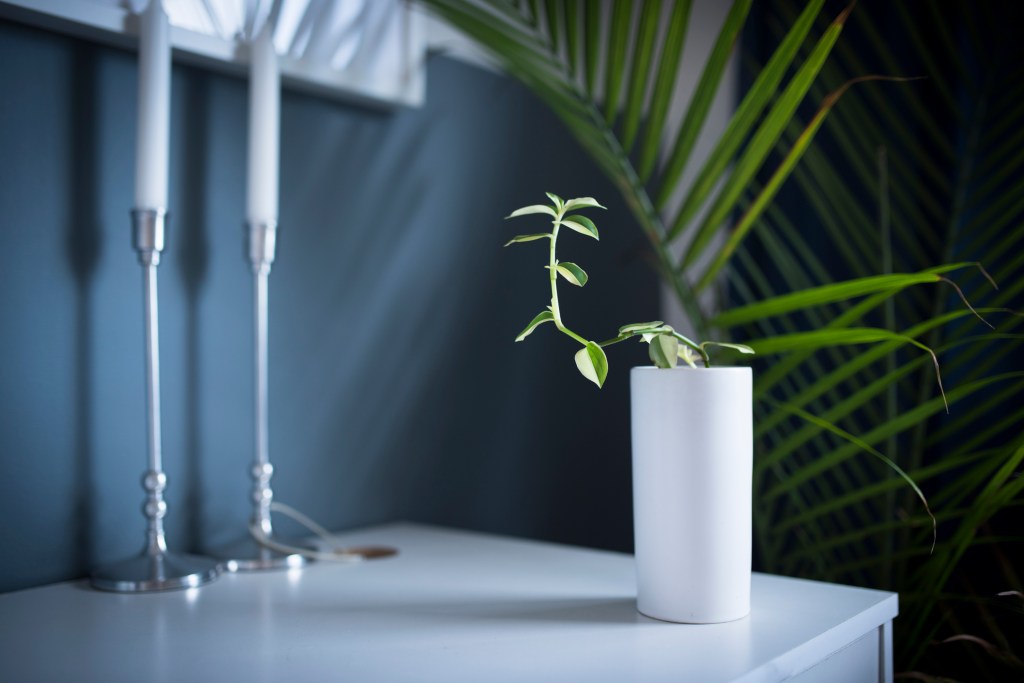Tropical plants can be alluring for any gardener, but they aren’t always easy to care for. With their unique patterns and interesting shapes and colors, it’s no wonder gardeners love bringing these plants into their homes. However, growing a plant in a different climate than it’s used to can be tricky, especially if you aren’t sure what they need.
If you’re interested in bringing a taste of the tropics home with you, then why not try growing Tradescantia zebrina, also known as a wandering Jew or inch plant? (Note: While wandering Jew has long been the common name for this houseplant, the name has its roots in antisemitism, so we won’t be using it). This mildly toxic plant is easy to grow and impressive to see. Here’s everything you need to know about Tradescantia zebrina plant care!
Soil and seasons
Zebrina grows well in many soil types, as long as it’s a well-draining soil. Adding perlite or a small amount of peat moss can help the soil retain water without exposing the plant’s roots to too much water. If you’re growing your zebrina in a pot, make sure there are drainage holes in the bottom. Adding a small amount of compost to the soil can help ensure your potted zebrina will have enough nutrients, since potted plants don’t have access to natural means of replenishing the nutrients in their soil.
When growing inch plants outside, it’s best to plant them once the weather warms, such as in spring in most areas. Since they are native to Central and South America, they’re adapted to heat and sensitive to cold. Frost can damage or kill them, so wait until all chance of frost has passed before planting them. You can start them indoors at any time, as long as you can keep them warm.

Sun and water
Tradescantia zebrina fares best in partial sun. Generally, when growing this plant outdoors, it can tolerate more shade. If you’re growing it indoors, though, then it’s important for it to get enough sun. When this plant doesn’t get enough sun, the colors of its leaves dim. After that, it begins to grow weaker. If you want to grow zebrina through winter, then you may need to invest in a sun lamp or grow light.
Keep the soil moist, but not soaking wet. Whenever the soil dries out, give it an even watering. Try not to soak the soil too thoroughly. Although zebrina can withstand overwatering on occasion, it can develop root rot if overwatered too often. During fall and winter, you can reduce the amount of water you give it even further. This is because the plant will go dormant as the temperature falls, and dormant plants don’t use as much water.

Pests and diseases
Luckily, zebrina plants rarely have serious issues with pests or diseases. The sap this plant produces is a mild skin irritant, which makes it unpleasant for most pests. It can develop root or stem rot when consistently overwatered, which can lead to mildew in some cases. Let the soil dry before watering it again and make sure the drainage holes are not clogged. In more severe cases, you may need to remove the affected part of the plant.
Some smaller insects can become a nuisance for zebrina. Aphids, whiteflies, scale insects, mealybugs, and spider mites can cause minor damage to the leaves and stems. In most cases, you can simply brush or blow the pests off of the leaves with your hand, a duster, or air. If you have a consistent issue with them, consider applying insecticidal soap. You can find these in gardening supply stores or make your own at home.

Fertilizing and propagating
If your inch plant is growing outside, then it may not need any fertilizer at all. If it’s an indoor plant, it may not need any either, depending on the potting soil you used when planting it and how long it survives. Zebrina plants grown in cooler climates often don’t live long enough for lack of nutrients to be an issue. However, if you’re determined to keep yours around, then fertilizing it during spring and summer can give it a helpful boost. You can fertilize your inch plant once per season or once every other month.
Zebrina plants are easy to propagate from cuttings, which can be rooted in water or soil without the use of a rooting hormone. Simply use a sharp, clean pair of scissors to cut a section off the end of one vine. The cutting should be several inches, with longer vines providing longer cuttings.
Snip the section off just above a leaf node at a slight angle. Remove the bottom few leaves and place the cutting in either clean water or soil. Make sure the remaining leaves are above the water or soil. You may see growth in under a week, depending on the variety of zebrina! Once the roots are a few inches long, you can transplant it from water to soil.
Whether you call it a wandering Jew, zebrina plant, inch plant, or just Tradescantia zebrina, this beautiful plant will look great in your garden or home. Consider mixing yours with some ferns, calathea, or orchids to create a stunning tropical display. Zebrina is so easy to propagate that you can fill your windows with them. As an added benefit, young zebrina plants make great gifts! If you aren’t sure what to get the gardener in your life, why not give them a cutting or two?
Editors' Recommendations
- Stunning Monstera plants that you should add to your indoor plant collection
- Beautiful, low-maintenance pothos varieties to add to your plant collection
- Your guide to rubber plant care and the best varieties to add to your home
- These are the most popular indoor plants of 2023 – add one or all to your collection
- A complete guide to caring for the holly plant, a common symbol of Christmas




